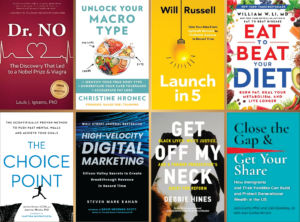How to Write in a Conversational Tone

Share
When it comes to writing coaching, the number-one request I get from clients is, “Can you show me how to write in a conversational tone?”
It’s a great question. In fact, it’s a genius question to ask, because, they don’t know it yet, but the question they’re really asking is not “how do I write in a conversational tone?” The real question is: “How do I create intimacy with my reader?”
When you know how to create intimacy with your reader, you have the power to make a real difference.
So, the first thing I am going to encourage you to do is to reframe your question.
Few people understand what it means to write in a conversational tone. Too often, writing in a conversational tone is confused with writing as if you’re conversing.
The result might lead you (well, not YOU, but people who aren’t as savvy as you) to speak into a voice recorder, transcribe it, paste it into their manuscript, and call it good.
Bad strategy.
Let’s look at how to tell the difference.
A Conversation vs. a Conversational Tone
When people speak extemporaneously, the general tendency is to ramble. Well, at least I often do.
Next time you’re telling a story to a friend, listen to yourself and see if you’ve ever done any of these. (Note: I do all of them!)
- Start telling a story. And…”Oh, that story reminds me of something I forgot to tell you. Okay, back to the story. Oh, wait! I need to tell you this other story first so you understand the story I’m telling you. Wait…wait…where was I? Oh, yes, the second story after the thing I forgot to tell you!”
- Start a sentence, and correct yourself halfway through it. Start it again.
- Or, and here’s one I do A LOT: say one thing, think of a better way to say the same thing, and say it again, rephrased in this new, better way.
All of this works fine for “conversational” speech, but can you imagine if you did “conversational writing”?
If you were to mimic any one of these pattens in a book, it would be so messy and hard to follow, your reader would be more likely to throw your book against a wall than finish reading it, much less buy additional services from you.
It would be a shame if that happened, because you literally have the ability to gain the undivided attention of your reader for as many hours as it takes to read your book. Imagine the value available. The power you could gain to spread your world-changing ideas.
Let me ask you something: what’s it worth to you to have around 6 hours of undivided attention from your ideal reader in this day and age?
A lot? Good. Let’s get into how to write in a conversational tone the right way.
Reframe “Conversational Tone” to “Creating Intimacy”
Have you ever read a non-fiction how-to style book and thought, “My gosh! It’s like that author is in my head! It’s like they can read my mind! They totally understand me!”?
If you have, and you remember the title, go back and re-read it to see what they did with their language.
Here’s what I’m betting you’ll find.
#1: They wrote to YOU, Not to their “Readers”
The number one intimacy killer is to write to “all you readers out there.” Or, say “Many of you readers might think…”
Do not do this!
Pick one person. Ideally, your ideal reader/client. Write to this person as if in this moment, they are the only person on Earth. And you see them. You know who they are, and you understand them.
Which brings me to point #2.
#2: They Know You, as Their Reader, But Don’t Make Assumptions about You
Sounds contradictory, right?
It’s really not, this is not about what you say, so much as how you say it.
If your ideal reader is also your ideal client, then you probably have a deep understanding of who your reader is, their goals and their challenges. Odd are high that you can empathize with the struggles they’ve encountered and anticipate the ones that lie ahead.
Here’s the catch: people don’t like to be told who they are and what they feel. In fact, if you write something like, “I know that when this happens, you feel…” or “I know what you’re thinking right now,” Or “I know you’ve tried for years to accomplish X, but Y keeps blocking you…” Even if you’re right, your reader will put up a wall faster than you can say “blink”!
“You don’t know me! How dare you assume you know what I’m thinking! You don’t know what my goals are!”
It’s just something funny our minds do automatically. Maybe it has to do with our birthright of free will. Whatever it is, humans don’t like to be told who we are or what we should do by decree.
But we do like suggestions.
Suggest, Don’t Dictate
So, if I lead with, “I know you’re not writing because you don’t have a clear, salable concept yet…” then the response is likely do be: “You don’t know me! You don’t know why I’m not writing! I just don’t have time to work on it right now!”
Just like that, I’ve lost the connection with my reader.
On the other hand, if I say, “Perhaps you have a book idea, but you’ve struggled to put pen to paper. It might be because you don’t have a solid book concept yet. Here’s how you can figure out if this is true…”
See how small adjustment in language totally changes the reader’s experience. Instead of telling the reader that I’ve made all kinds of assumptions about them, I show the reader that I have seen what stops a lot of writers, and I am providing them an avenue to figure out if they are experiencing the same roadblock.
It’s a small adjustment in language, but the result is enormous. With this second approach, your reader can now see themselves in the conversation, saying, “You know what? I now can see I have struggled with my book concept! Wow, this author really gets me!”
If you keep this up consistently throughout your book, your reader will feel seen and understood by you, the author. They will feel a personal connection to you. You will become a trusted advisor in their mind. Some readers tell me that they hear me advising them in their own mind while they are writing.
The Bottom Line is This:
Don’t worry about how to write in a conversational tone, focus on writing to create intimacy with your reader.



